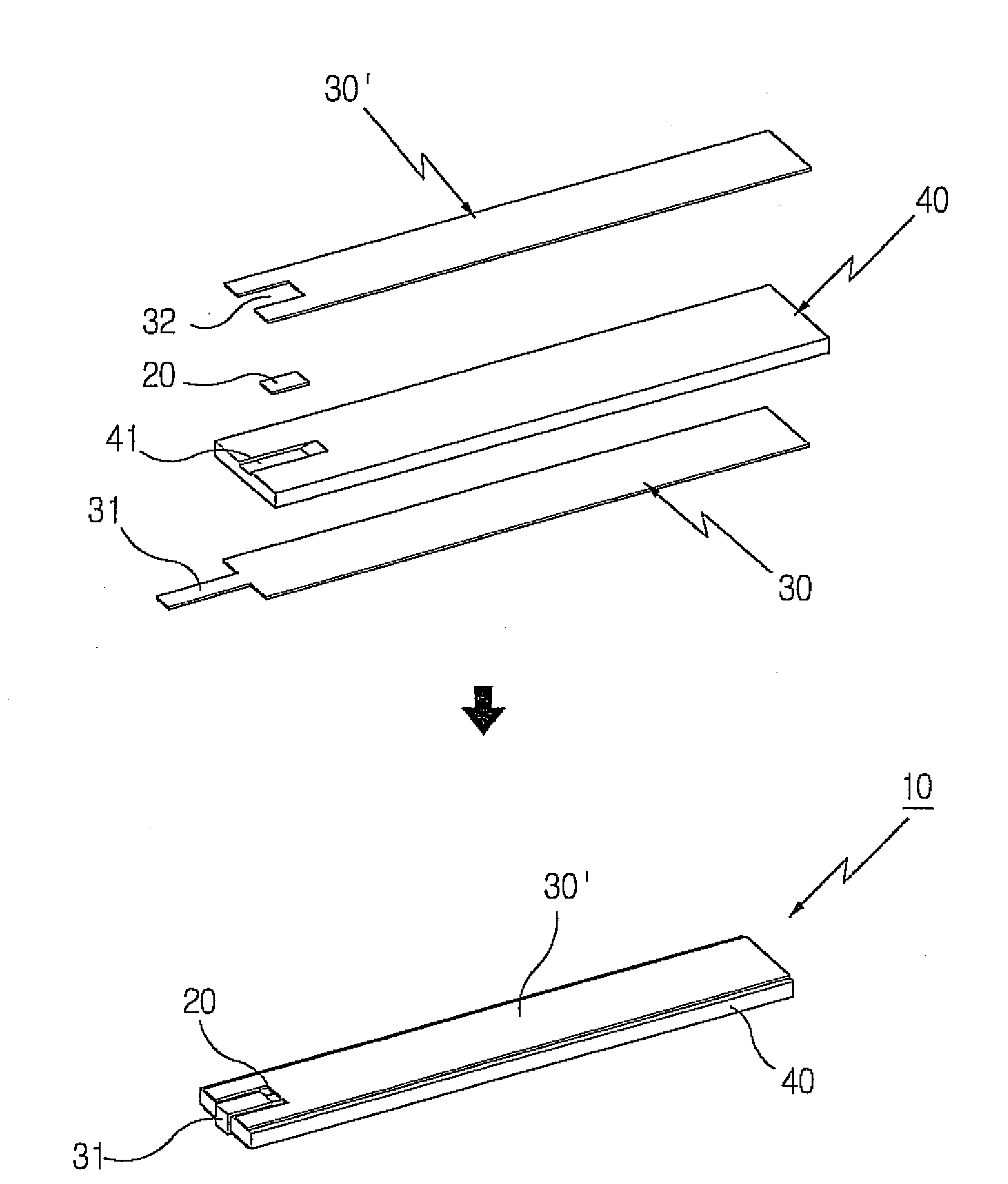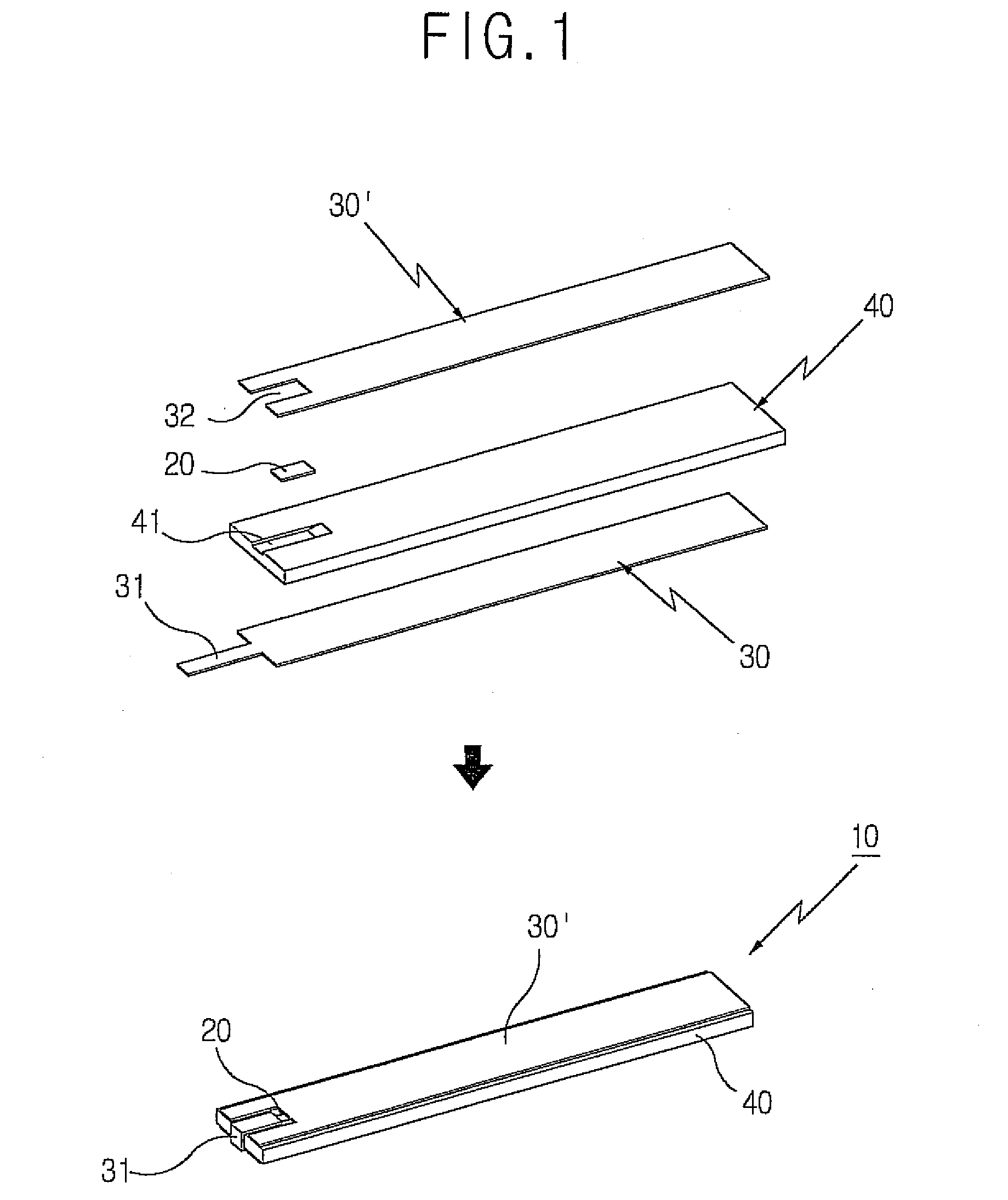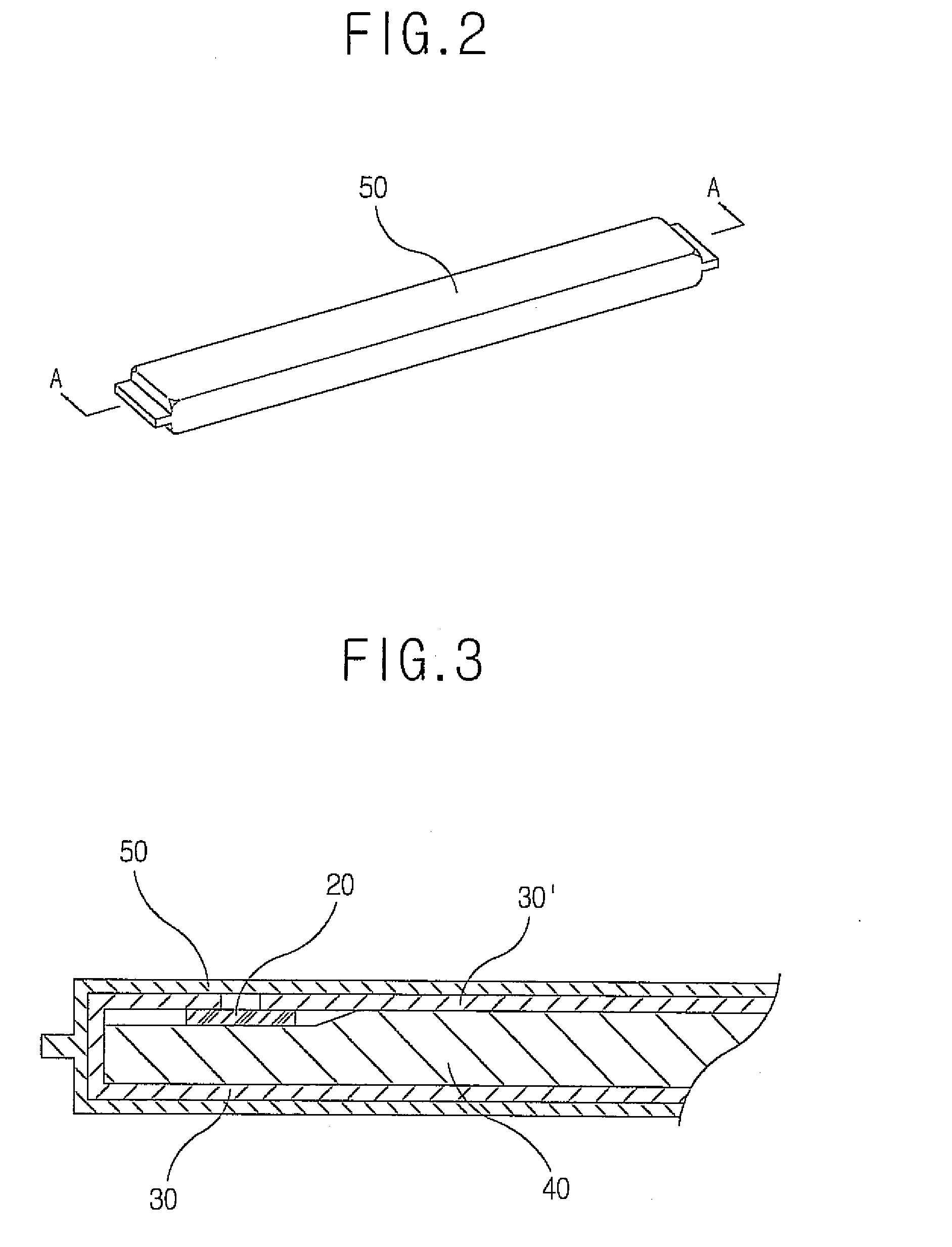RFID tag and ceramic patch antenna
a technology of ceramic patch antenna and rfid tag, which is applied in the direction of burglar alarm mechanical actuation, instruments, packaged goods types, etc., can solve the problems of inability to adapt, thin, flat, and adaptable conventional rfid tags incorporating coils, and achieve the effect of wide application rang
- Summary
- Abstract
- Description
- Claims
- Application Information
AI Technical Summary
Benefits of technology
Problems solved by technology
Method used
Image
Examples
Embodiment Construction
[0028]The present invention relates to a design and method which can solve abovementioned problems. This invention is aiming at manufacturing antennas with very thin metal plate, in their diverse shapes and configurations, enabling acceptable receiving rate, manufacturing cost reduction, and simple process.
[0029]According to this invention, the antennas connecting both ends of the RFID chips can be formed by painting, spraying, or printing with conductive ink, enabling easy forming in diverse shapes, very thin, reducing manufacturing facilities and relevant cost, while maintaining their performance.
[0030]Furthermore, by forming dielectric member using ceramic substance of which permittivity is 4.0˜210, dimensions of the dielectrics can be significantly downsized, enabling compact and light antenna. Therefore, RFID chips produced in accordance with this invention can be affixed to moving or small objects. The ceramic patch antennas produced in accordance with this invention have high...
PUM
 Login to View More
Login to View More Abstract
Description
Claims
Application Information
 Login to View More
Login to View More - R&D
- Intellectual Property
- Life Sciences
- Materials
- Tech Scout
- Unparalleled Data Quality
- Higher Quality Content
- 60% Fewer Hallucinations
Browse by: Latest US Patents, China's latest patents, Technical Efficacy Thesaurus, Application Domain, Technology Topic, Popular Technical Reports.
© 2025 PatSnap. All rights reserved.Legal|Privacy policy|Modern Slavery Act Transparency Statement|Sitemap|About US| Contact US: help@patsnap.com



